|
|
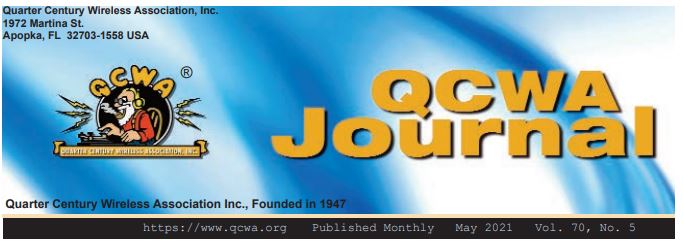 |
|
|
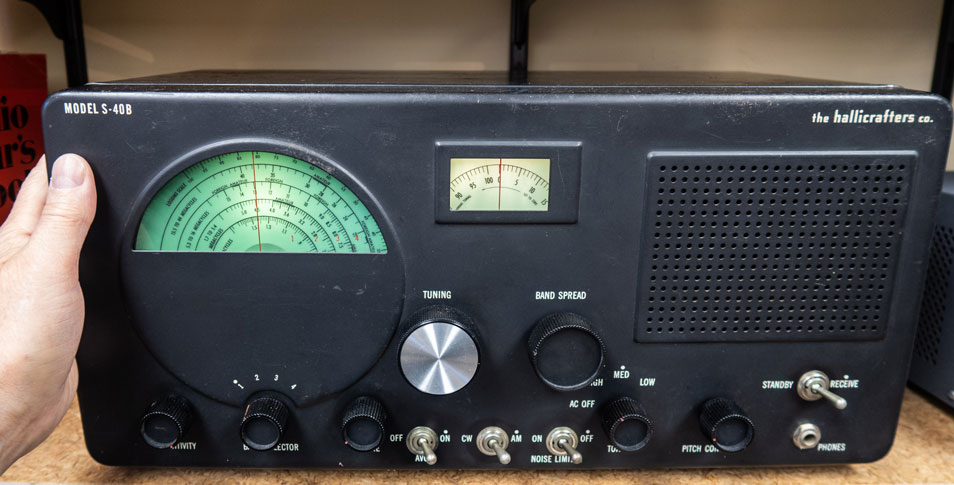 |
This month’s cover
As a part of restoring radios from the 1930s through the
60s, I recently tackled a Hallicrafters S-40B communications
receiver. It was a mostly enjoyable experience bringing the old
piece of gear back to life. Let me suggest that old AC powered
radios, especially those with metal cases, should be reworked to
have three-wire power cords. This applies to radios that you
might use, rather than a restoration where the radio is
faithfully returned to factory new appearance before putting it
on a shelf for display. I put a 3-wire power cord on the S-40B
because the radio has a metal case and is used on a regular
basis in my man cave. To be clear, I am talking about radios
with power transformers. Radios that are AC/DC and/or have
resistance power cords are not good candidates for this kind of
modification. No manufacturer would build anything with a “hot
chassis” nowadays. The liability is too great.
|
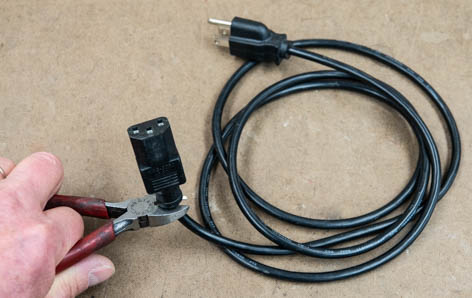 |
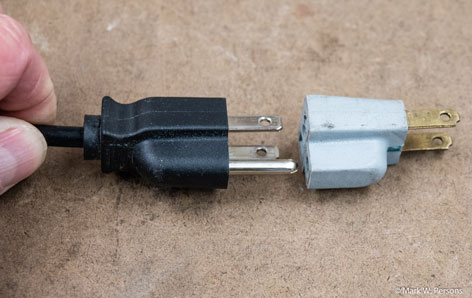 |
Power cords
Be safe rather than sorry. The
third wire in a power cable is a safety ground. There were no
ground wires on radios and other appliances before the 1960s. It
was normal to occassionally get a tingle from a radio with
leakage to its chassis. Radio enthusiasts today are in greater
danger of being shocked or even electrocuted from these relics
as insulation breaks down. A power transformer can develop a
short from a winding to its core. That could put a full 120 VAC
on the radio case. Ouch! My junk box is a source of power cords.
The one shown (cover photo, right) is left over from an old
computer. I cut off the plug, at the computer end, and used the
rest. The wires are not always the traditional black for hot,
white for neutral, and green for ground. When this happens, I
ohm them out to be sure I am connecting/soldering to the correct
wire. Replacing the original two-wire power cord, with a
three-wire with ground, is a good choice. It will keep you and
others safer. That assumes you plug the radio into a grounded
power outlet and do not use a 3-wire to 2-wire cheater/adapter,
as shown in Fig. 2 above. Adapters of that sort will defeat the
ground and can create a dangerous situation.
GFCI
If you do the update, you may find the radio now trips a
Ground Fault Circuit Interrupter in your home wiring. Why is
that? Well, many old radios used a capacitor to RF couple one
side of the power line to the radio’s chassis. The idea was to
create an RF ground connection so only a single wire was needed
for an antenna. That capacitor might be shorted or draw enough
current to trip the GFCI, which compares current traveling
between the 120 VAC wire and the neutral wire in the same cord.
Any difference between the two means AC is going to ground
somewhere. The GFCI trips to keep people along with pets safe
and can even prevent fires. I rigidly attach/solder the
three-wire power cord’s ground wire to a radio chassis. It will
provide the needed RF ground. I then disconnect the original RF
capacitor because it is no longer needed.
|
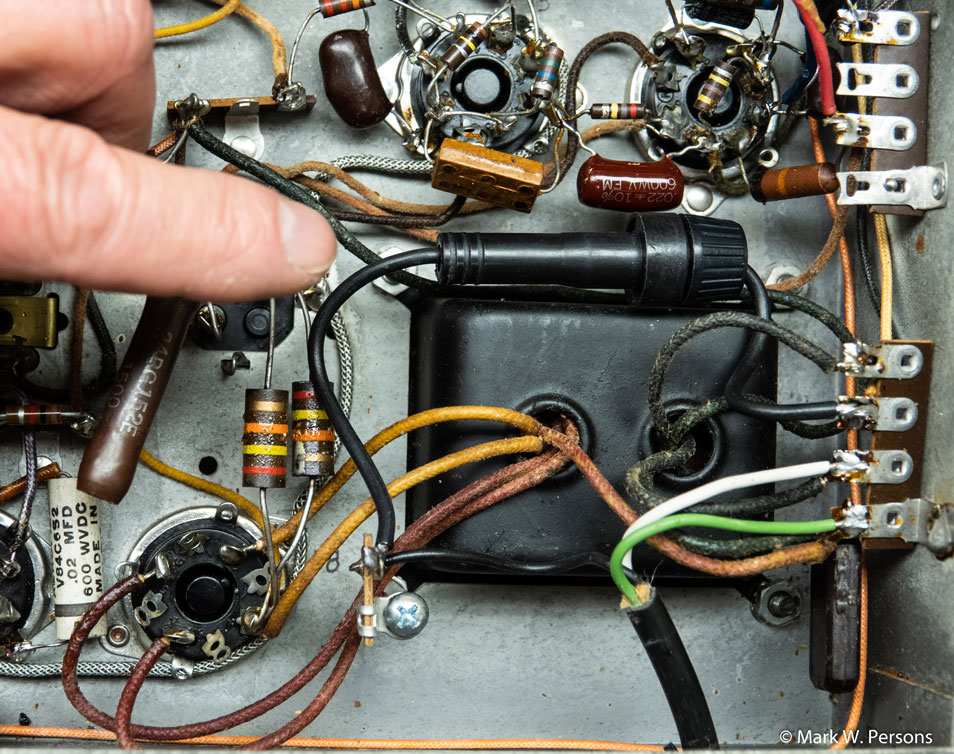 |
Fuse it
Let me also encourage you to add a
fuse in the hot side of the power cord. You can drill a hole in
the chassis and install a fuse holder or you could use an inline
fuse holder, as shown in on the left cover photo, under the
chassis. The advantage here is that it will not damage the
outward appearance of the vintage radio. To determine a proper
fuse size, I generally start by measuring current drawn by the
radio with the audio turned all the way up. Then I select a fuse
of 1.5 to 2 times that value. Safety, safety, safety It is up to
you to use good judgment when making modifications. Do not
attempt anything if you are unsure of what all this means and/or
your capabilities in doing it well.
|
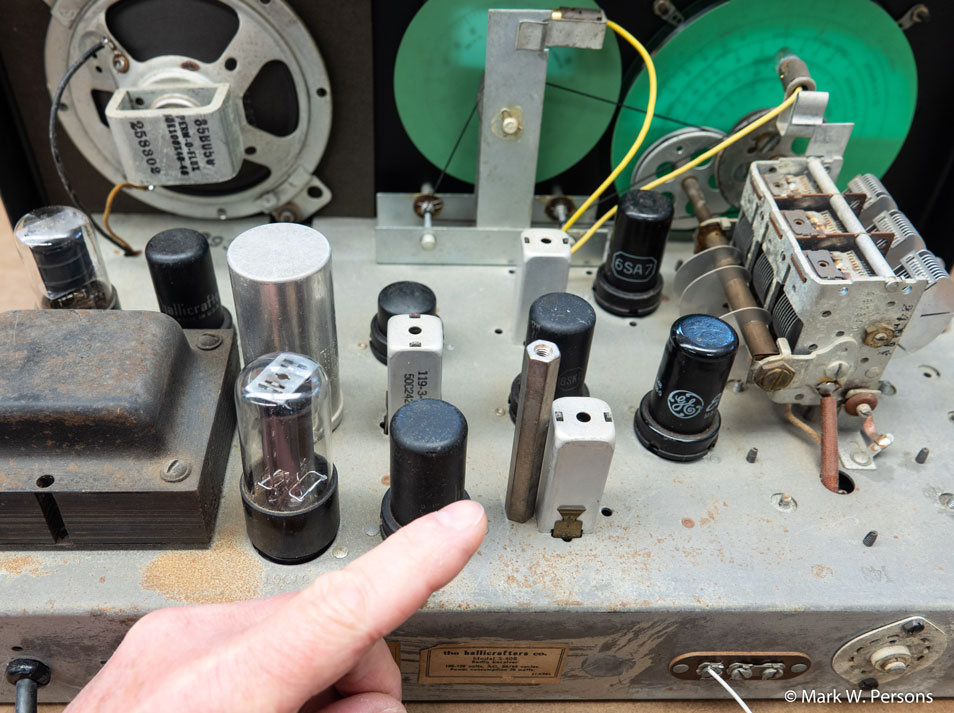 |
Another tip
Turning an old radio upside down for service can present its own
problem. The figure on the right shows a hardware spacer, also
from a junk box. It was secured to the chassis with one screw
and allows turning the chassis over for repair without damaging
tubes or other hardware. |
|
|
|
Submitted by: Mark Persons,
W0MH. Editor’s note: Mark Persons W0MH is a retired radio
broadcast engineer, member number 36456 in the QCWA and life
member of the ARRL. He was first licensed in as WN0AXD at the
age 15 in 1962. Mark received the Engineer of the Year award
from the Society of Broadcast Engineers in 2018 and their
Lifetime Achievement Award in 2020. He currently mentors four
radio broadcast engineers and is a member of the National Radio
Systems Committee, which develops improved technical standards
for radio broadcast and ultimate adoption by the FCC. |
|
|


